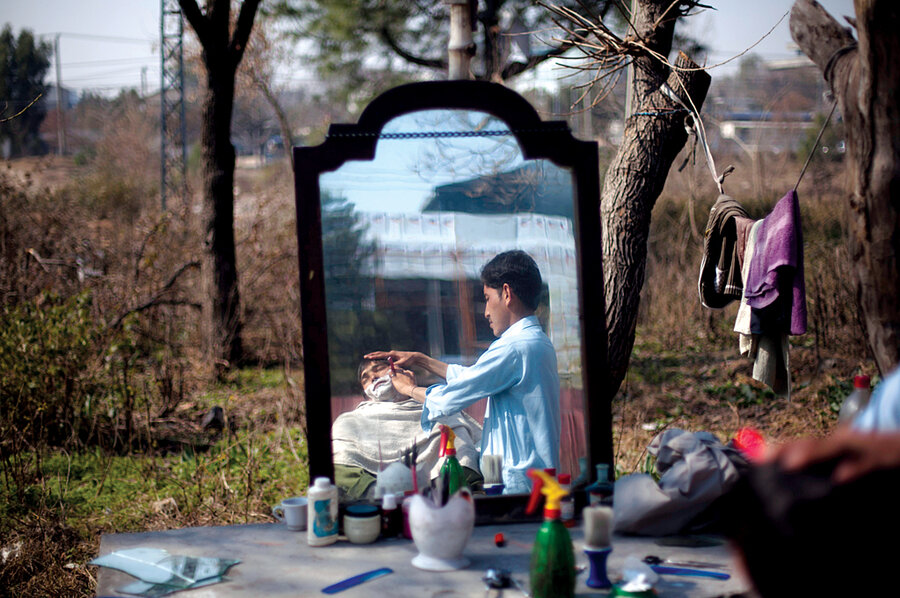Finding the true focus
Loading...
Anyone can be a photographer, but it takes a trained eye and intellect to use photography to make sense of the world. Filmmakers are masters of the captured image. So are photojournalists. Each works a different field, but each has essentially the same problem to navigate: truth.
Though most movies are fiction, they seek to be true in their own way. World War II veterans, for instance, have said the harrowing assault on the Normandy beaches in “Saving Private Ryan” felt disturbingly real. Was “Zero Dark Thirty” truthful about torture? Did “Lincoln” and “Argo” get it essentially right, or was history subordinated to drama? As Peter Rainer notes in his review of the Chilean film “No” (page 38), factual accuracy has become a hot cinematic issue.
Photojournalism is supposed to be all about factual accuracy. We think of a camera as an objective collector of reality. But as with reporting, history writing, and any form of documentary, subjectivity is unavoidable.
Monitor photo editor Alfredo Sosa and his team pore over dozens of images each day from photographers and agencies, looking for interesting but also fair depictions of the world. This requires honesty about stereotypes and biases.
The photos that flow into the Monitor, Alfredo says, too often show a sprawling culture like India as a place of snake charmers and poverty. “What you never see,” Alfredo says, “is the middle-class couple going to the movies or having dinner.” Images from China usually show masses of people, and across the Middle East the cliche is angry crowds. But what about people just taking their kids to school or sharing a laugh?
Can normal be interesting? The answer is yes, but it takes a sensitive photographer and a careful editor.
Monitor photojournalism aims to counteracts visual stereotypes. In recent weeks, we’ve shown you a cowboy-themed park in Lebanon, an Indian religious festival, Cairo’s ancient al Azhar University, and the streets of Northern Ireland.
A interesting image, carefully captured, is the start of good photojournalism. Thoughtful editing tries to make the image both true and interesting.
* * *
The films Monitor readers like tend to be human-oriented/ I know this from e-mails and letters you’ve sent over the past couple of years in response to an earlier column about movies. Explosions and violence aren’t absent from your top choices, but big bangs, car chases, and gore aren’t relished. Those who wrote to me favor pluck and originality. Than can range from quirky ( “Harold & Maude”) to rousing (“The Music Man”), mordant ( “Being There”), to romantic (“Moonstruck”). You enjoy epics (“Out of Africa”; “The Godfather”) and laughs (“Dumb and Dumber”; “Parenthood”). But it probably comes as no surprise that you really love classics: “Ryan’s Daughter”; “They Shoot Horses, Don’t They?”; “The Scent of the Green Papaya”; “The Lives of Others.”
There aren’t many alien invasions or space operas among your favorites. The one that comes closest is “The Day the Earth Stood Still,” which is really a parable about humanity.
Here’s the takeaway, at least for me: I’d enjoy a bag of popcorn with any of these movies.
John Yemma is editor of the Monitor. He can be reached at editor@csmonitor.com.








